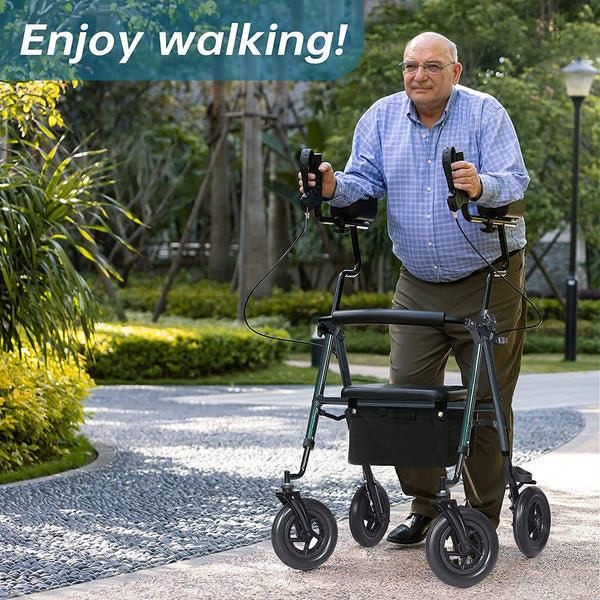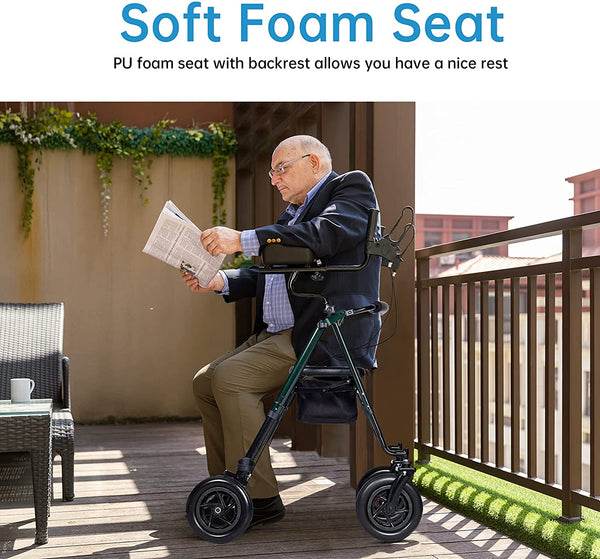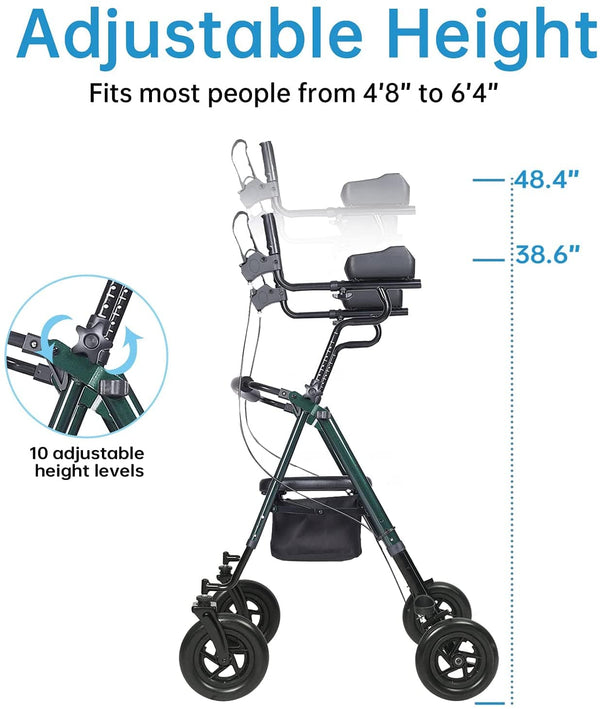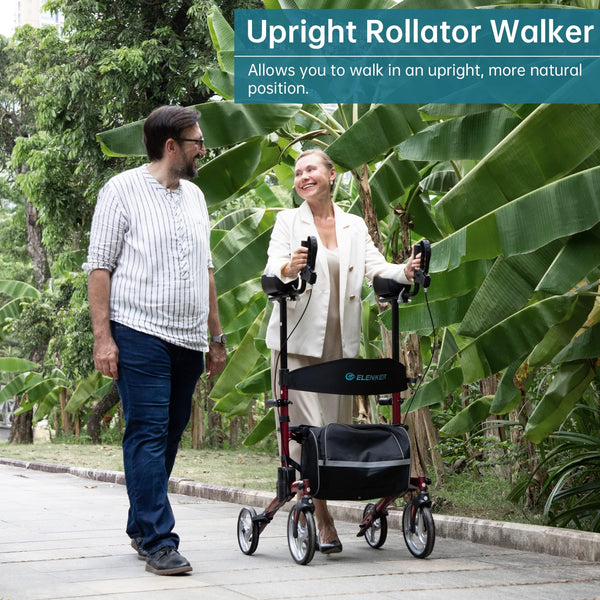Can a Rolling Walker Reduce Fatigue in Heart Disease?
May 19, 2025
Living with heart disease isn’t easy. Tasks that once felt like a breeze—like walking to the kitchen, going grocery shopping, or strolling through the park—can suddenly feel like climbing a mountain. Fatigue becomes part of the daily routine. It’s not just about being tired; it’s that deep, body-heavy kind of tired that doesn’t just go away with a nap. For many people, the simple act of getting around becomes exhausting.
That’s where something like a rolling walker with a seat can really come in handy.
Why So Tired?
Let’s talk about the fatigue part. People with heart disease often deal with fatigue for a bunch of reasons. The heart just isn't pumping as efficiently as it used to, which means less oxygen gets delivered to the muscles. When your muscles don’t get enough oxygen, they get tired faster. Add in the medications, lifestyle changes, and emotional toll of managing a chronic illness, and yeah - fatigue is real.

Now imagine trying to walk around while dealing with all that. It’s no wonder many folks look for tools to help them stay mobile without feeling like they’ve just run a marathon.
How Does a Rolling Walker Help?
A rolling walker with a seat offers a bunch of little perks that add up to a big difference when it comes to getting around and managing fatigue. Here’s how:
1. Support While Walking
When you’re walking with a rolling walker, you're not just relying on your legs to carry all your weight. The walker takes some of the load off, and that lightens the work for your body. That means your muscles aren’t working quite as hard, your breathing doesn’t get as heavy, and you can go a little farther without wearing out.
Think of it like this: instead of powering through a walk on your own, you’ve got a helpful buddy to lean on.

HFK-9236T4 ELENKER Upright Rolling Walker with 10" wheels
2. Built-in Seat for Instant Rest Stop
This might be the best part. A rolling walker with a seat gives you the freedom to stop and rest whenever you need to. If you're out and about and feel that wave of fatigue creeping in, you don’t have to panic or push through it. Just flip around, have a seat, and catch your breath.
This alone can make it possible to go places you might have avoided before. Walking through a museum? Waiting in line at the pharmacy? You’ve got your own chair with you at all times. Pretty convenient, right?

HFK-9236T4 ELENKER Upright Rolling Walker with a built-in soft foam seat for instant rest stop
3. Confidence Leads to Less Stress
Fatigue isn't just physical—it’s mental, too. Worrying about falling or not being able to make it through a trip to the store adds a lot of stress. And stress, as we know, isn’t great for the heart.
Having a rolling walker can give you peace of mind. You know you’ve got support. You know you can sit if you need to. That confidence can make outings feel less daunting and more doable. And when you’re not burning mental energy on worry, that’s more energy to put toward moving and enjoying life.
4. Better Posture, Easier Breathing
Heart disease can sometimes cause shortness of breath, especially when you’re slouched or hunched over. Using a upright walker encourages better posture, especially if it’s adjusted properly. That helps open up your chest and lungs, making it easier to breathe while walking.
So not only does it reduce fatigue, it can actually help you breathe a little easier as you go.

HFK-9236T4 ELENKER Upright Rolling Walker with a adjustable height
5. Encourages Gentle Movement
Ironically, while rest is important, so is movement. Staying active—at the right level—is a huge part of managing heart disease. But that’s tricky when you feel exhausted all the time.
A rolling walker makes it more realistic to fit gentle walking into your day. You can take things at your own pace, knowing you have support the whole time. And the more regularly you move (without overdoing it), the better your stamina gets over time. That can mean less fatigue in the long run.
A Quick Example from Daily Life
Let’s say there’s a woman named Mary. She’s 72, lives with congestive heart failure, and gets winded just walking down the block. After she started using a rolling walker with a seat, she noticed she could take more walks around her neighborhood. She’d go out in the morning, walk for five minutes, rest on the seat for a couple minutes, then head back. Within a few weeks, she was walking longer and feeling a little more energized. That seat made her feel safer and more in control—and that motivated her to keep going.

HFK-9240 ELENKER Upright Walker with 10" wheels
Things to Keep in Mind
Of course, a rolling walker isn’t a magic fix. It's a tool. And like any tool, it works best when it fits your needs.
Make sure it fits your height. An ill-fitting walker can cause more trouble than help. Most models are adjustable.
Practice using it at home. Get comfortable before heading outside.
Take breaks before you need them. Don’t wait until you're exhausted—sit and rest regularly to avoid overdoing it.
Talk to your doctor or physical therapist. They can help you figure out the right pace for you and how to use the walker effectively.
Fatigue is one of the toughest parts of living with heart disease. It can make you feel like your world is shrinking. But tools like a rolling walker with a seat can help open things back up again. They give you the freedom to move, the safety to rest, and the confidence to keep going.
It’s not about pushing yourself harder—it’s about finding ways to do what you want without burning out. A rolling walker might seem like a small thing, but for many people, it can mean the difference between staying stuck and staying active.
So if you’re dealing with heart disease and find yourself too wiped out to walk much, maybe it’s time to give one a try. You might be surprised at how much easier life feels when you’ve got a seat to rest on and a little extra support to lean on.











